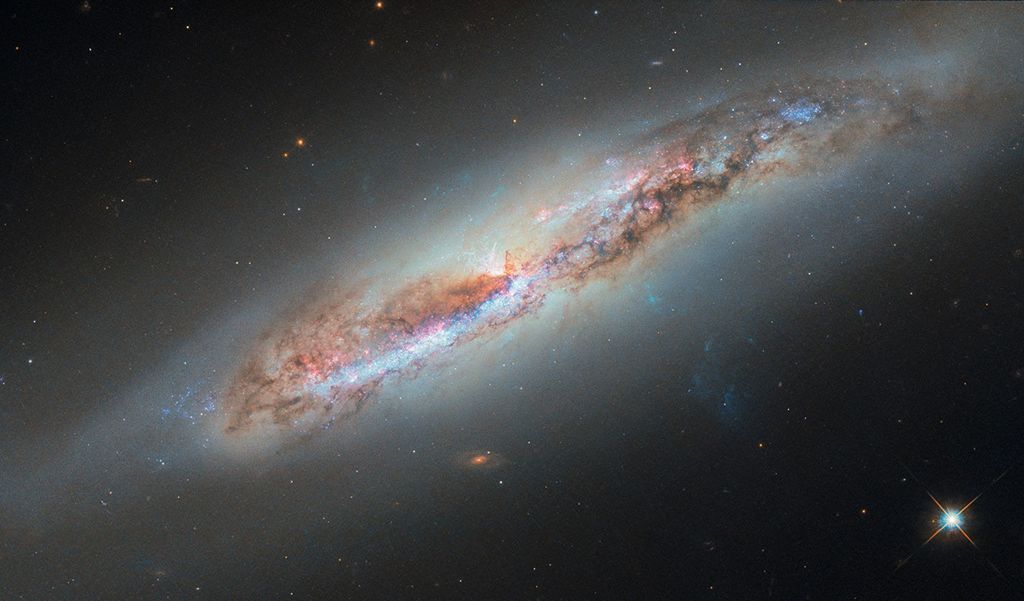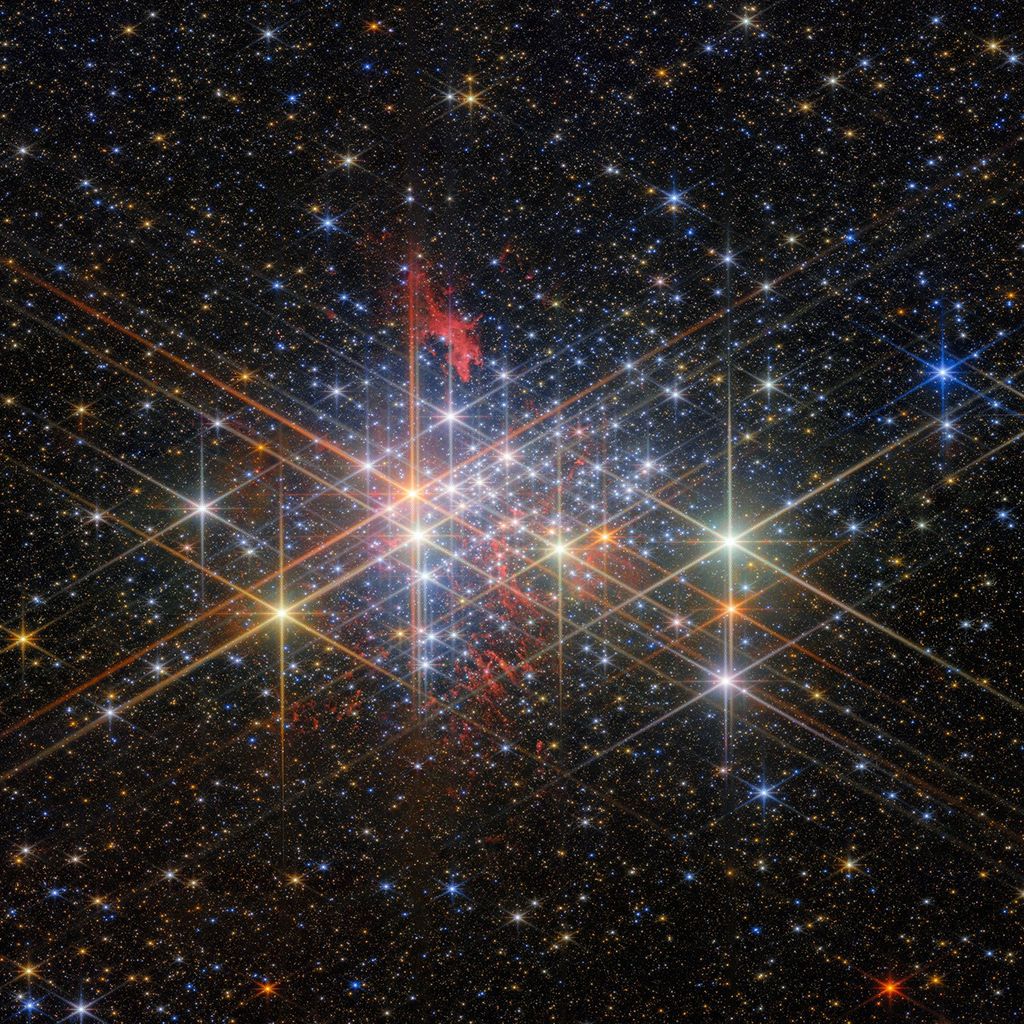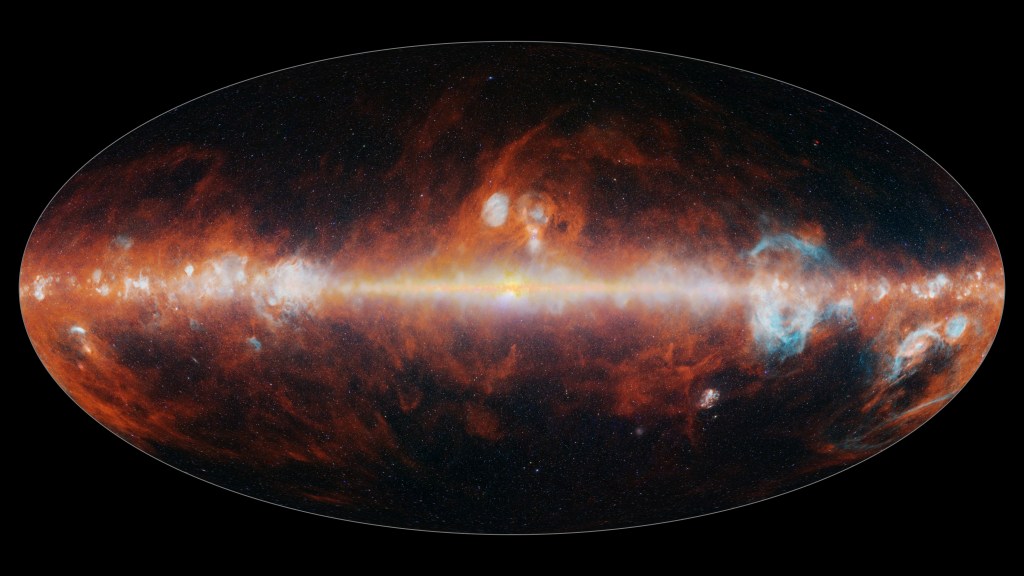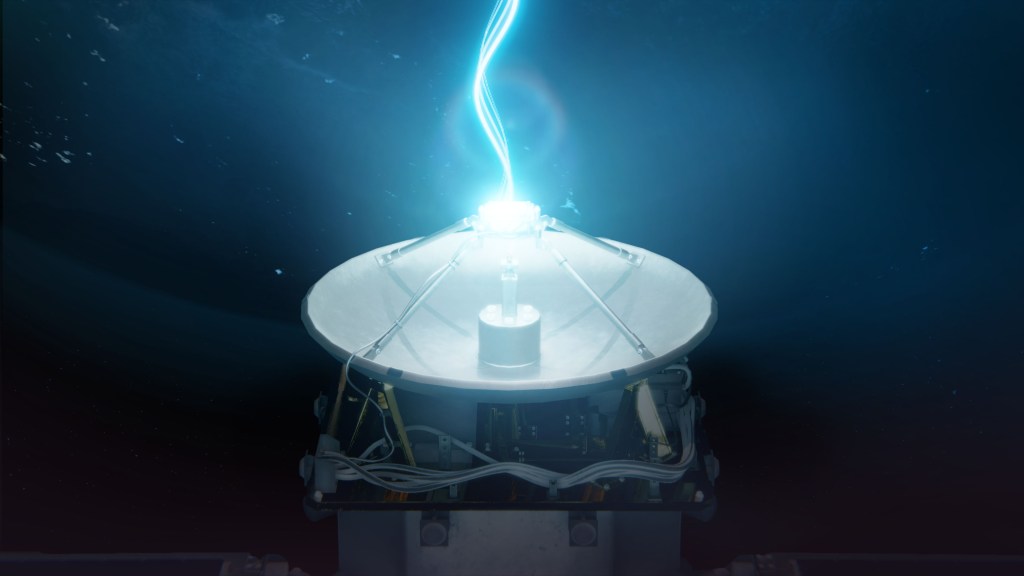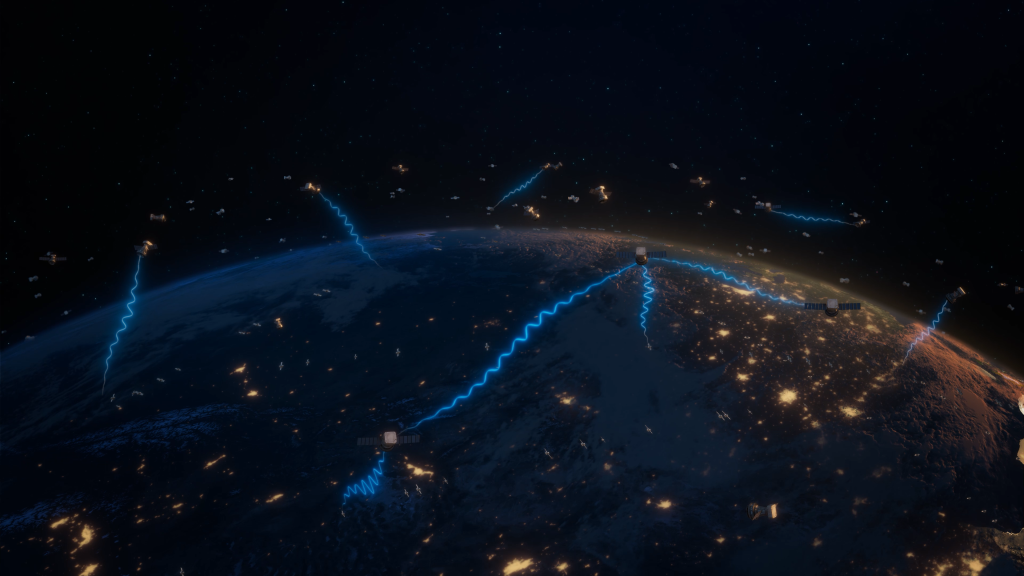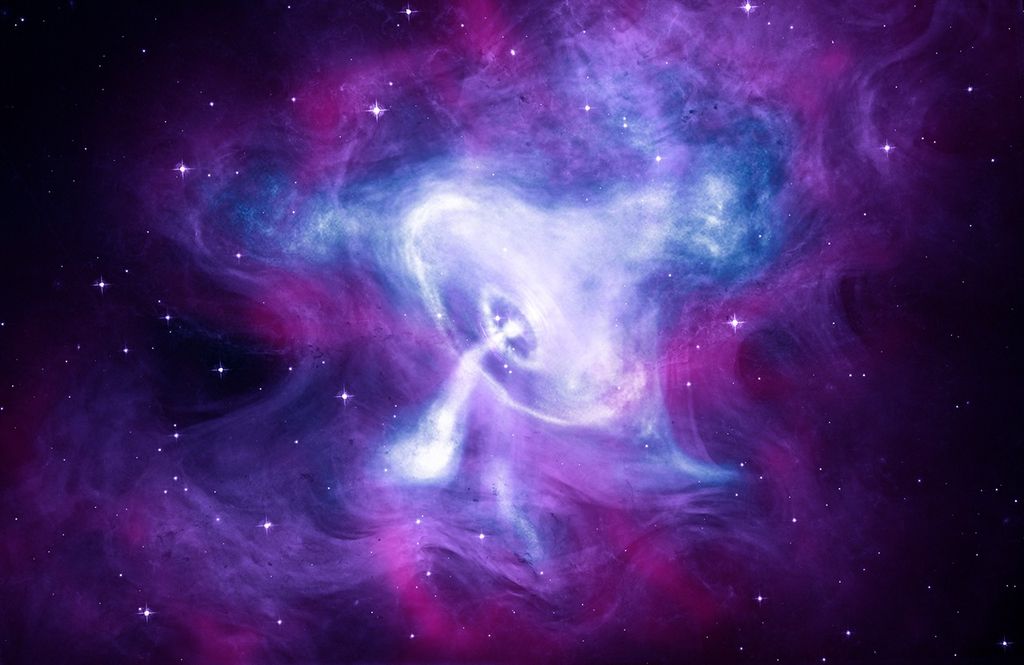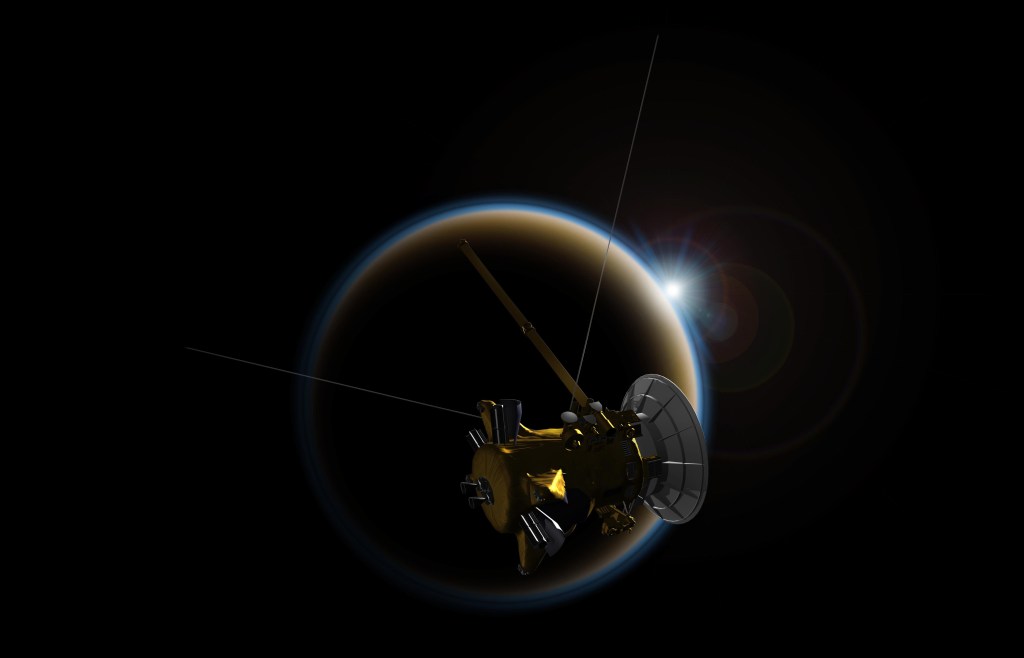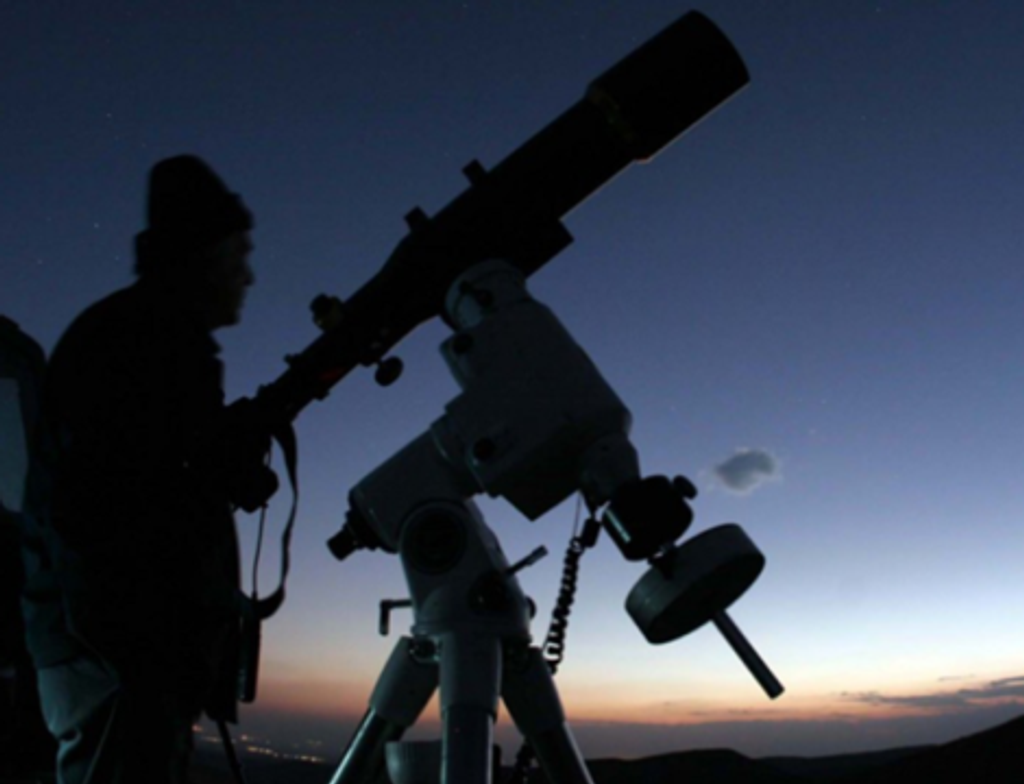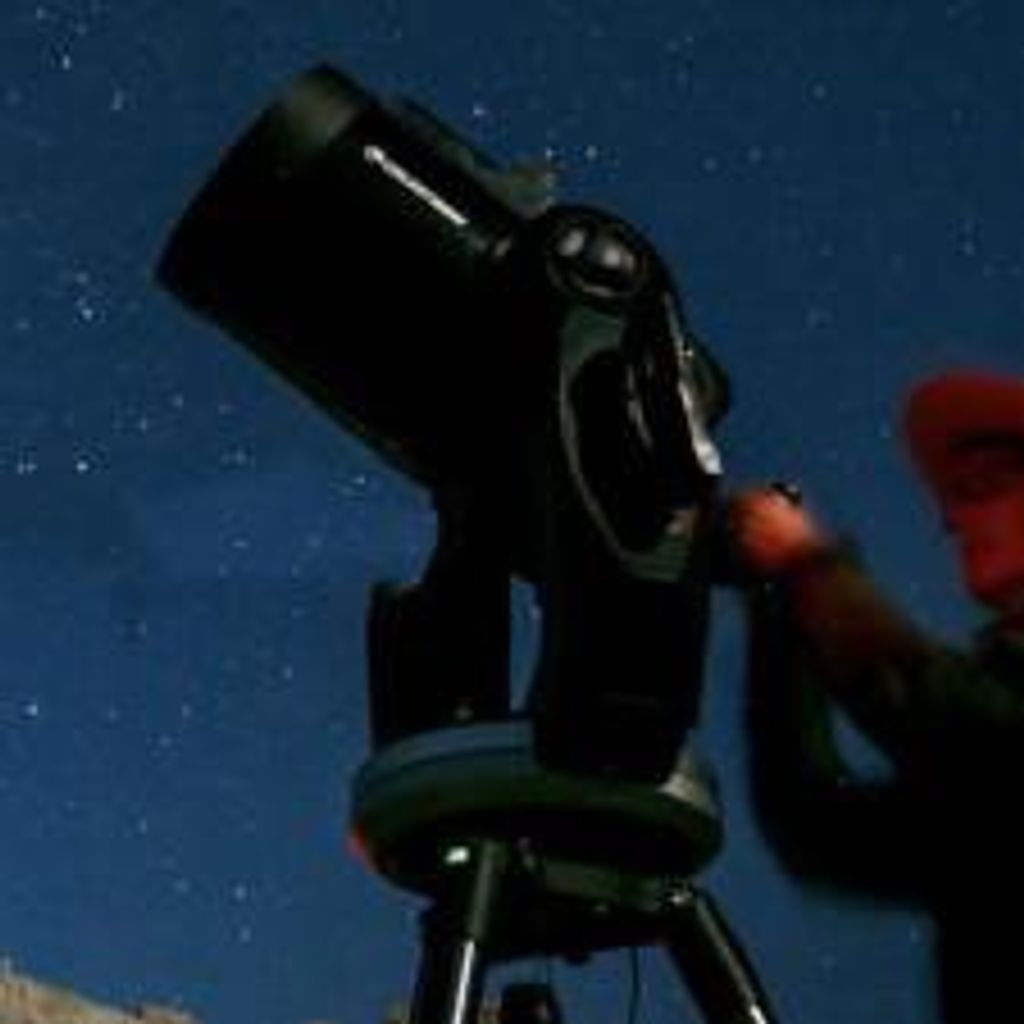1 min read
Comparison of a Model of a Blue Supergiant’s Spectrum with Observational Data

Scientists found that the Hubble data from MACS J1149+2223 Lensed Star 1 (Icarus) matches the model for a blue supergiant. The agreement shows a remarkably good fit, and indicates that Icarus is approximately twice as hot as the Sun. The solid blue line shows the model spectrum of the blue supergiant, adjusted for the distance to the host galaxy of the highly magnified star. The red diamonds are the actual data measured for Icarus. The observed wavelength of the Balmer discontinuity relative to its intrinsic wavelength (at about 365 nm) is an indicator of the distance to the star. The strength of the Balmer discontinuity depends on the strength of the star’s gravity at its surface and its temperature.
- Release DateApril 2, 2018
- Science ReleaseHubble Uncovers the Farthest Star Ever Seen
- Credit
Related Images & Videos

Icarus (MACS J1149+2223 Lensed Star 1)
The Farthest Star Ever Seen Icarus, whose official name is MACS J1149+2223 Lensed Star 1, is the farthest individual star ever seen. It is only visible because it is being magnified by the gravity of a massive galaxy cluster, located about 5 billion light-years from Earth....

Compass Image for Icarus (MACS J1149_2223 Lensed Star 1)
This graphic shows the location, orientation, and filters used to image MACS J1149+2223 Lensed Star 1, the farthest individual star ever seen. Called Icarus, this star is only visible because it is being magnified by the gravity of a massive galaxy cluster, located about 5...
Share
Details
Last Updated
Aug 17, 2025
Contact
Media
Claire Andreoli
NASA’s Goddard Space Flight Center
Greenbelt, Maryland
claire.andreoli@nasa.gov

